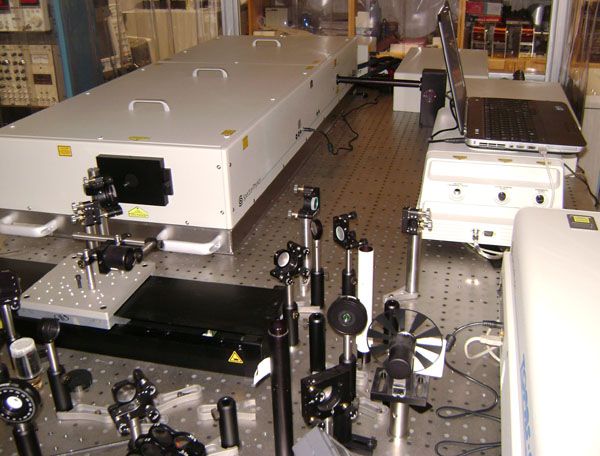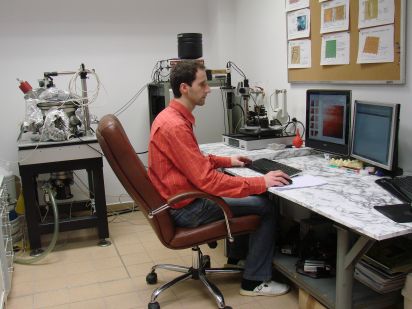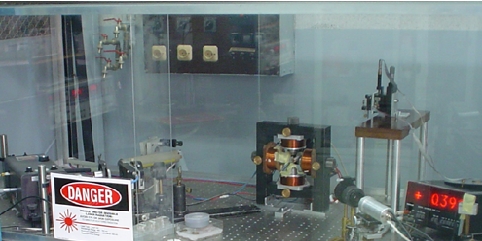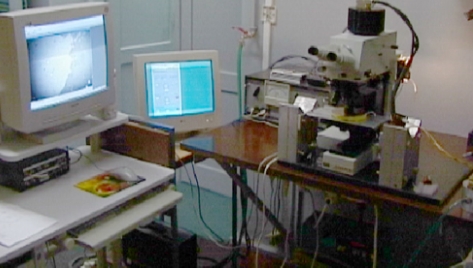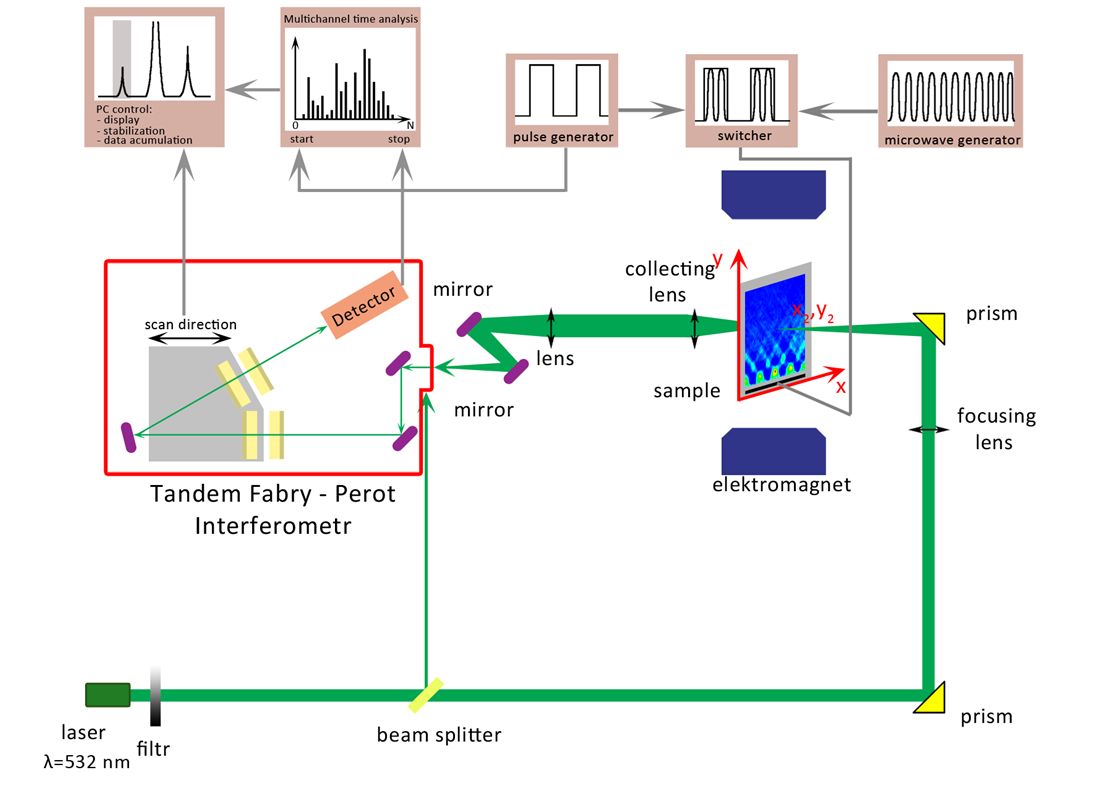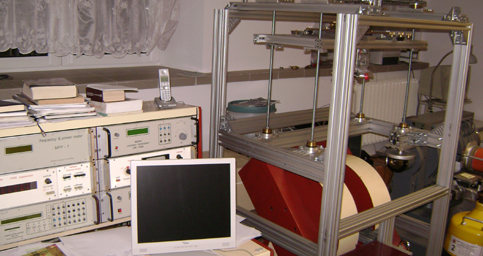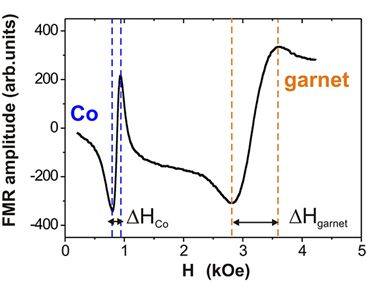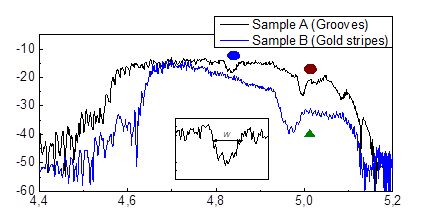Equipment
Magnetooptyczne laboratorium bazujące na laserach femtosekundowych
The Laboratory is equipped with two femtosecond lasers systems (one with light amplifier has been recently installed with
![]() SPINLAB support).
SPINLAB support).
|
|
Description
Spectra-Physics: Amplifier Spitfire Ace (5mJ, 35fs, 800nm, 1kHz) ; Optical Parametric Amplifier (Topas, 290nm-2600 nm);
MaiTai SP (20fs, 0.6W, 780-820nm); MaiTai HP (80fs, 3W, 690-1040 nm, 80MHz)
Research:
- Magneto-optical spectroscopy
- Magnetization induced SHG
- Static and dynamics of domain structure
- Magnetic anisotropy and phase transition
- Light-induced magnetic effects
Materials:
- Ultrathin metalic films
- Nanopatterned structures
- YIG:Co exchange-coupled structured
- Light-sensitivity semicondutors
Contact person: Dr hab. Andrzej Stupakiewicz, E-mail:and@uwb.edu.pl
Keywords: femtosecond laser, ultra-fast dynamics, second harmonics generation, magneto-optical Kerr effect
Układy mikroskopów ze skanującą sondą
|
Scanning Probe Microscope is equipped with electro-magnets system (either in-plane magnetic field up to 0.2T or perpendicular field up to 0.1T), cold finger system (110K-450K), vacuum chamber (10-6 Torr), vibration isolation system and videomicroscope with manual continuous zoom. Study of surface topography as well as magnetic, electrical and electrochemical properties is possible. Force and voltage lithography is available. Measurements can be done in both high vacuum and in air (contact AFM, LFM, Resonant Mode (semicontact + noncontact AFM), Phase Imaging, Force Modulation (viscoelastisity), MFM, EFM, Adhesion Force Imaging, AFM Litography-Force, Spreading Resistance Imaging ("conductive" AFM), AFM Litography-Voltage, Scanning Capacitance Imaging, Scanning Kelvin Microscopy) as well as in a liquid (contact AFM, LFM, Adhesion Force, Force Modulation (viscoelastisity), Resonant Mode (semicontact AFM), Phase Imaging, AFM Litography-Force).
Contact person: Contact person: mgr Piotr Mazalski, e-mail:piotrmaz@uwb.edu.pl
Keywords: scanning probe microscopy, atomic force microscopy, magnetic force microscopy
Magnetooptyczny magnetometr Kerra o wysokiej czułości
|
High Sensitivity Magneto-Optical Kerr Magnetometer equipped with special electro-magnets system (perpendicular to the plane sample up to 20kOe and in-plane up to 4kOe magnetic field), Coherent Ar (Innova 300), dye (599-2) and red-diode lasers, optical cryostat (10-350K), photo-elastic modulator (s,p-polarization, rotation and ellipticity polar, longitudinal, transverse Kerr effects, linear and circular dichroism). Study of static and dynamics magnetization reversal processes and vector magnetization analysis in ultrathin multilayer magnetic films with specialized LabView software for control magnetometer and data analysis.
Contact person: Dr hab. Andrzej Stupakiewicz, E-mail:and@uwb.edu.pl
Keywords: magneto-optical Kerr effect, magnetization reversal processes, photomagnetic effects, magneto-optical spectroscopy, linear and circular dichroism
Magnetometry bazujące na optycznych mikroskopach polaryzacyjnych 
|
Laboratory is equipped with self-constructed optical systems and SPINLAB supported bought microscope system.
- Carl Zeiss Jenapol optical polarizing Kerr microscope
- special electro-magnets (out-of-plane or in-plane, static and pulse magnetic field),
- Carl Zeiss Xe and halogen lamps;
- high sensitivity 12-bit MicroMax CCD camera.
Study of statics and dynamics of domain structure (mainly in nanostructures) is possible by the structure imaging with both perpendicular and in-plane magnetization components. Specialized image processing techniques and LabView software for control and data analysis were developed.
![]() SPINLAB supported system
SPINLAB supported system
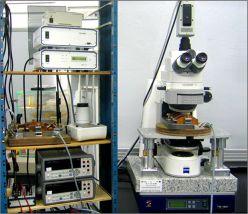 |
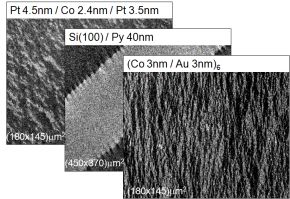 |
|
|
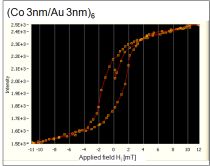 |
Contact person: Dr. hab. Maria Tekielak, E-mail:tekmar@uwb.edu.pl
Keywords: magneto-optical Kerr effect, magnetic domain structure, static and dynamics magnetic domain wall
Układ generacji pola magnetycznego 3D do badań magnetooptycznych
3D magnetic field system for magnetooptic investigations.
![]() SPINLAB supported system
SPINLAB supported system
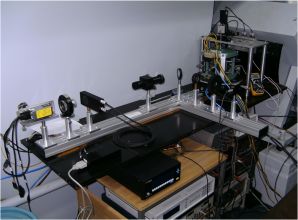 |
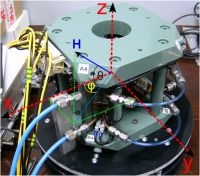 |
|
|
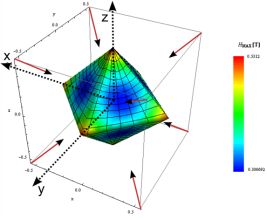 |
Spektrometr rozpraszania światła Brillouina z rozdzielczością czasową i przestrzenną
![]() SPINLAB supported system
SPINLAB supported system
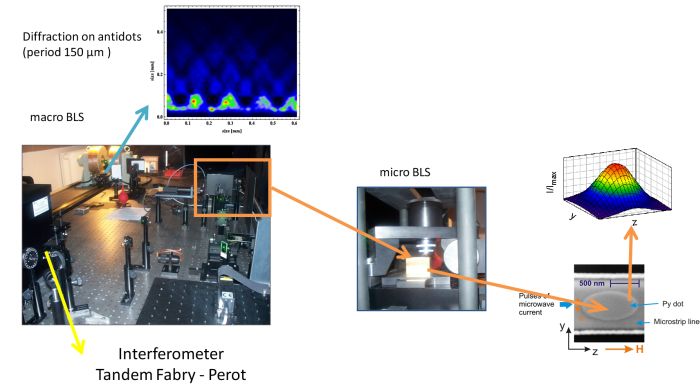
Kriostat pracujący w obiegu zamkniętym do badań magnetooptycznych 
![]() SPINLAB supported system
SPINLAB supported system
|
Closed-cycle, cryo-free cryostat DE-204 PF Advanced Research System, Inc, USA, for magnetooptical-Kerr-microscopy-investigation of spatial distribution of magnetization.
|
Closed-cycle, cryo-free cryostat CFSM7T-1.5 OXFORD INSTRUMENTS PLC for magnetooptical investigation of ultra-fast magnetization processes in low temperatures and high magnetic field.
|
Spektrometr rezonansu ferromagnetycznego
|
FMR lines for Co/YIG:Co heterostructure measured at θH = 65° and ϕH = 0° of the external magnetic field H. (from Andrzej Stupakiewicz, Materials Science: "Magnetic Materials",edited by Khan Maaz, ISBN 978-953-51-2428-3, 2016) |
A high - sensitivity ferromagnetic resonance spectrometer at a microwave frequency of 9.5 GHz and room temperatures with computerized data collection systems. The FMR spectra are investigated as a function of the orientation of the applied dc field. Study of magnetic anisotropy in thin and super thin magnetic samples.
Contact person: Dr hab. Ryszard Gieniusz, E-mail:gieniusz@uwb.edu.pl
Keywords: Ferromagnetic resonance, magnetic anisotropy, magnetic films.
Spektrometr rezonansu ferromagnetycznego oparty o VNA (VNA-FMR)
- The methods for the characterization of thin layers of magnetic nanostructures;
- ROHDE&SCHWARZ ZVA-40 Vector Network Analyzer
Frequency range 45MHz–40 GHz; - Magnetic field up to 1 T;
|
Transmission spectra of spin waves in YIG sample with groves (A) and with gold stripes (B) measured with microstripe lines in external magnetic field 0.1T. |
Contact person: Dr hab. Ryszard Gieniusz, E-mail:gieniusz@uwb.edu.pl
Keywords: Ferromagnetic resonance, magnetic anisotropy, magnetic films.

 Polish version
Polish version English version
English version